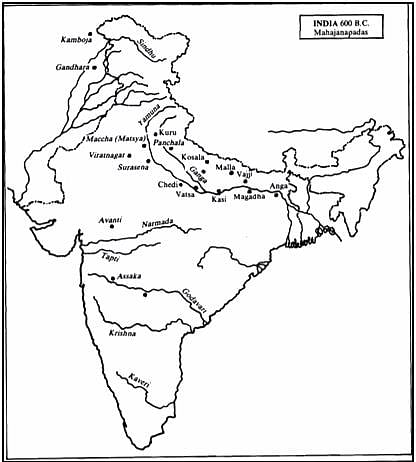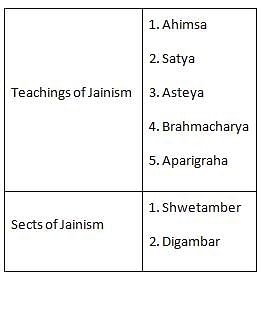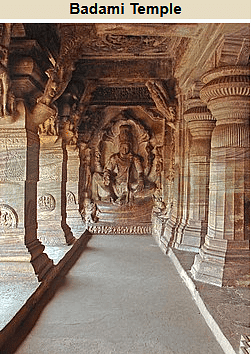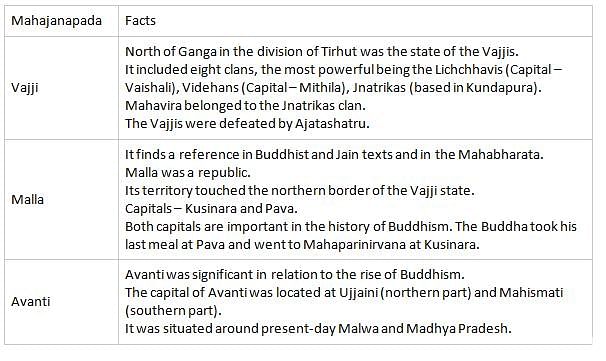APSET Paper 2 Mock Test - 3 (History) - AP TET MCQ
30 Questions MCQ Test APSET Mock Test Series 2025 - APSET Paper 2 Mock Test - 3 (History)
Which of the following statements about Alberuni and his account of India are correct?
(A) He was exiled and ordered to spend ten years in India
(B) According to him, people of untouchable castes could live only outside the villages and towns of the four castes
(C) He supported the views of Brahamagupta about the true nature of eclipses
(D) According to him, the Hindus think that there is no country like theirs and no religion like theirs
Choose the correct answer from the options given below:
In the context of pre-Mauryan history, consider the following statements:
1. The Mahajanapada period is referred to as the first urbanisation.
2. During this period, the political centre shifted from Indo-Gangetic plains to lower Ganga valley.
3. The 16 mahajanapadas find reference only in Buddhist scriptures.
4. Among the mahajanapadas, rajyas were monarchies and ganas were republics.
Which of the above statements is/are not correct?
| 1 Crore+ students have signed up on EduRev. Have you? Download the App |
In which Jaina text Bindusara is called Seemseri?
Which of the following states was first to be annexed by Lord Dalhousie under the Doctrine of Lapse?
With reference to the Malwa School of painting, consider the following statements:
1. It flourished between 1600 and 1700 CE and is most representative of the Mughal courts.
2. Its three-dimensional simplistic language appears as a consummation of stylistic progression from the Jain manuscripts to the Chaurpanchashika manuscript paintings.
3. A large number of Malwa paintings discovered from the Datia Palace collection supports a claim for Bundelkhand as the region of painting.
4. Malwa School defies a precise centre for its origin and instead suggests a vast territory of Central India, where it got articulated with a sporadic mention of a few places, such as Mandu, Nusratgarh, and Narsyang Sahar.
Which of the statements given above is/are correct?
Consider the following statements regarding Badami Cave paintings:
1. These paintings are influenced by the mural paintings of Ajanta Caves.
2. Paintings in this cave are devoted to Buddhism and Shaivism.
Which of the statements given above is/are correct?
Consider the following statements
1) The Chinese pilgrim Fa-Hien attended the fourth Great Buddhist Council held by Kanishka.
2) The Chinese pilgrim Hiuen-Tsang met Harsha and found him to be antagonistic to Buddhism.
Which of the statement(s) given above is/are correct?
Consider the following statements, with reference to the Pali texts.
1) The peasants had to pay one sixth of their produce.
2) Taxes were collected through an intermediate landlord between the peasant and the State.
Choose the correct statement.
Who among the following served as non-Indian presidents of Indian National Congress?
- Alfred Webb
- George Yule
- William Wedderburn
- Henry Cotton
Select the correct option from the codes given below:
In the context of Mughal administration, consider the following pairs:

Which of the pairs given above are correctly matched?
What is the descending order of military cavalry composition according to Barni?
1. Sarkhel
2. Sipahsalar
3. Amir
4. Malik
Which of the following assertions best describes the ideology and methods of the Assertive Nationalists within the Indian freedom movement?
'Chachnama' is a famous work on the History of
With reference to Lord Wellesley, consider the following statements:
1) The Civil Service was brought into existence by him.
2) He also established the College of Fort William for the education of young recruits to the Civil Services.
Which of the statements given above is/are correct?
Who formed the “Indian Parliamentary Committee” along with Dadabhai Naoroji?
Who was the leader of Tana Bhagat Movement?
Which of the following Mahajanapada had a large deposit of iron-ore?
Consider the following statements:
Assertion(A):- The Santhals were given land and persuaded to settle in the foothills of Rajmahal by the 18th century.
Reason(R):- They initially refused to cut forest, resisted touching the plough, and continued to be turbulent.
Which of the following rulers got the title of ‘Jagatguru’ by his Muslim subjects because of his secularist policies?
|
60 tests
|





















